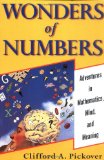Suppose you meet a friend who you know for sure has two children, and he says: “I have a son born on Tuesday.” What is the probability that the second child of this man is also a son?
People argue about this problem a lot. Although I’ve discussed similar problems in the past, this particular problem has several interesting twists. See if you can identify them.
First, let us agree on some basic assumptions:
- Sons and daughters are equally probable. This is not exactly true, but it is a reasonable approximation.
- For our purposes, twins do not exist. Not only is the proportion of twins in the population small, but because they are born on the same day, twins might complicate the calculation.
- All days of the week are equally probable birthdays. While this can’t actually be true — for example, assisted labors are unlikely to be scheduled for weekends — it is a reasonable approximation.
Now let us consider the first scenario. A father of two children is picked at random. He is instructed to choose a child by flipping a coin. Then he has to provide information about the chosen child in the following format: “I have a son/daughter born on Mon/Tues/Wed/Thurs/Fri/Sat/Sun.” If his statement is, “I have a son born on Tuesday,” what is the probability that the second child is also a son?
The probability that a father of two daughters will make such a statement is zero. The probability that a father of differently-gendered children will produce such a statement is 1/14. Indeed, with a probability of 1/2 the son is chosen over the daughter and with a probability of 1/7 Tuesday is the birthday.
The probability that a father of two sons will make this statement is 1/7. Among the fathers with two children, there are twice as many who have a son and a daughter than fathers who have two sons. Plugging these numbers into the formula for calculating the conditional probability will give us a probability of 1/2 for the second child to also be a son.
Now let us consider the second scenario. A father of two children is picked at random. If he has two daughters he is sent home and another one picked at random until a father is found who has at least one son. If he has one son, he is instructed to provide information on his son’s day of birth. If he has two sons, he has to choose one at random. His statement will be, “I have a son born on Mon/Tues/Wed/Thurs/Fri/Sat/Sun.” If his statement is, “I have a son born on Tuesday,” what is the probability that the second child is also a son?
The probability that a father of differently-gendered children will produce such a statement is 1/7. If he has two sons, the probability will likewise be 1/7. Among the fathers with two children, twice as many have a son and a daughter as have two sons. Plugging these numbers into the formula for calculating the conditional probability gives us a probability of 1/3 for the second child to also be a son.
Now let us consider the third scenario. A father of two children is picked at random. If he doesn’t have a son who is born on Tuesday, he is sent home and another is picked at random until one who has a son that was born on Tuesday is found. He is instructed to tell you, “I have a son born on Tuesday.” What is the probability that the second child is also a son?
The probability that a father of two daughters will have a son born on Tuesday is zero. The probability that a father of differently-gendered children will have a son who is born on Tuesday is 1/7. The probability that a father of two sons will have a son born on Tuesday is 13/49. Among the fathers with two children, twice as many have a son and a daughter than two sons. Plugging these numbers into the formula for calculating the conditional probability will give us a probability of 13/27 for the second child to also be a son.
Now let’s go back to the original problem. Suppose you meet your friend who you know has two children and he tells you, “I have a son born on Tuesday.” What is the probability that the second child is also a son?
What puzzles me is that I’ve never run into a similar problem about daughters or mothers. I’ve discussed this math problem about these probabilities with many people many times. But I keep stumbling upon men who passionately defend their wrong solution. When I dig into why their solution is wrong, it appears that they implicitly assume that if a man has a daughter and a son, he won’t bother talking about his daughter’s birthday at all.
I’ve seen this so often that I wonder if this is a mathematical mistake or a reflection of their bias.
How to solve the original problem? The problem is under-defined. The solution depends on the reason the father only mentions one child, or the Tuesday.
The funny part of this story is that I, Tanya Khovanova, have two children. And the following statement is true: “I have a son born on Tuesday.” What is the probability that my second child is a son?
Share:





